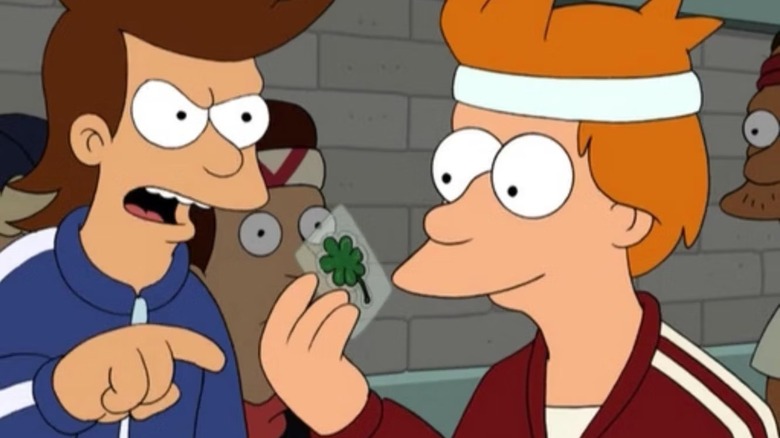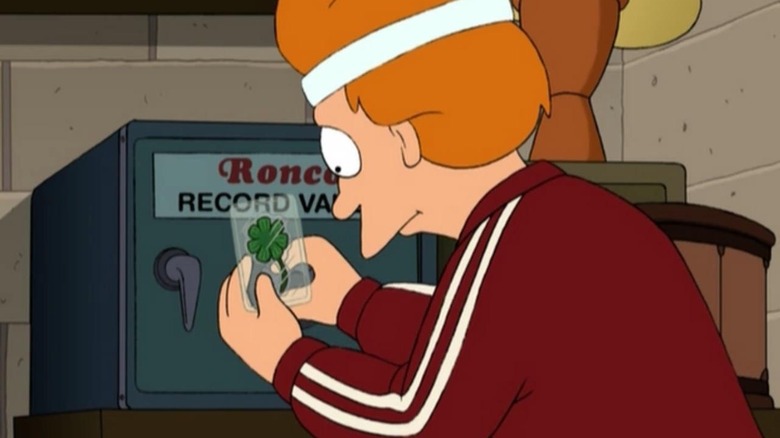This Was The Single Toughest Futurama Episode To Write
In the "Futurama" episode "The Luck of the Fryrish" (March 11, 2001), Fry (Billy West) becomes increasingly concerned about his lack of good luck in the 31st century. He loses at horse races, loses his last dollar, and loses all his hair when he is struck by lightning. Fry figures that his lack of good luck stems from the fact that he lost a lucky talisman when he was a youth. Fry used to have a seven-leaf clover that brought him good fortune, and made him lucky enough to beat his jealous older brother Yancy (Tom Kenny) at basketball. Although Fry had been cryogenically frozen for 1,000 years, he figures his seven-leaf clover is still locked in his childhood safe, preserved in the subterranean ruins of old New York. Into the sewers he must go.
The episodes cuts back and forth between Fry in the 31st century as he seeks his clover, and Fry in the past, as he discovered the clover and also developed a relationship with his brother. Yancy coveted the clover, and 31st-century Fry suspects that his older brother might have stolen it and moved it sometime after he disappeared in the 20th century. The ultimate location of the clover will reveal a deeply emotional plot twist that Fry didn't see coming.
According to the DVD commentary track for "Fryrish," the episode was logistically very difficult to make. "Futurama" co-creator David X. Cohen noted that "Fryrish" was the first episode they did that took place in two time frames, and wrangling the chronology required a lot of study and planning. Eventually, Cohen and his crew would be able to juggle multiple timelines with ease — see "Bender's Big Score" — but in 2001, it was still something they had to figure out.
I'm looking over a seven-leaf clover
Amusingly, Cohen mixed up the timeframes a little in his descriptions of "Fryrish," as the "present" of the series is the future, and the past of the series is the present. Or the near-past. It's easy to keep track of while watching it, of course, it merely takes many words to describe it in text. The solution to keeping the story straight in the writer's room was to write each story on color-coded notecards, a technique suggested by the episode's credited writer, Ron Weiner. Cohen said:
"This was one of the most challenging episodes, if not the most challenging episode, to write. Because it was the first one where we really tried to tell a story in the past and a story in the future at the same time. Or should I say the present and the future, whatever it is. [...] Now [this] is an insider piece of information. [W]e had one color index cards for the future, one for the present. Present purple, and future fuchsia!"
Note: they weren't literally purple and fuchsia. That was a little alliteration joke on Cohen's part.
Cohen also admitted to being inspired, at least partially, by Francis Ford Coppola's "The Godfather Part II," a film that also tells two simultaneous stories in two time frames. One story takes place in the present, or least the "present" version of the "Godfather" films, following the character of Michael (Al Pacino), and the other takes place several decades previous, when his father (Robert De Niro) was a young man. What Cohen was clearly saying is that "The Luck of the Fryrish" is just as good, if not better, than "The Godfather Part II."

